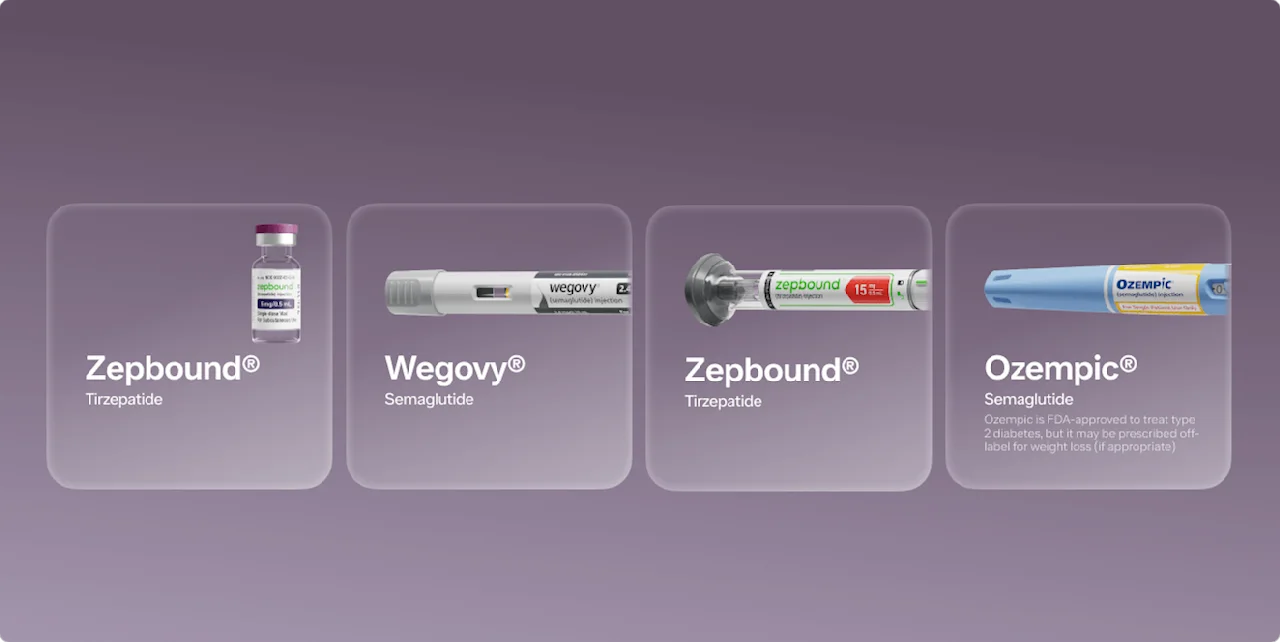Here's what we'll cover
Here's what we'll cover
Many people spend most of their lives focused on ways to “save” calories to help them lose weight. But for some people, their challenge is keeping their weight high enough or eating enough calories to put on muscle.
Keep reading to learn some of the reasons it may be more challenging to keep your weight high enough, along with some high-calorie foods to help you gain weight.
What are high-calorie foods?
High-calorie foods contain a large number of calories for a smaller volume of food.
We get our calories from the macronutrients within the food, with each macronutrient representing a certain number of calories. The three macronutrients are (Osilla, 2021):
Carbohydrates: Most carbs provide about 4 calories per gram (10 grams equals about 40 calories). Carb foods include grains, fruits, vegetables, and sugars.
Fat: This is the most calorie-dense macronutrient, providing about 9 calories per gram. This includes different types of fat like saturated and saturated fat, found in foods like meat, oils, dairy products, nuts, and butter.
Protein: There are around 4 calories per gram of protein. It’s found in foods like meat, nuts, beans, eggs, and legumes.

Who may need higher calorie foods
We most often hear about the health risks of having excess weight or obesity. But being underweight can result in health problems, too. Health problems caused by being underweight include (Saunders, 2010):
Infertility and loss of menstrual cycles
Osteoporosis and weak bones
Weakened immune system
Anemia
Fatigue and weakness
Poor sleep
Slow wound healing
Some health conditions and lifestyle factors may make it more challenging for you to maintain a healthy weight, like:
High metabolism
Low appetite
High activity levels
Cancer
HIV and AIDS
Hyperthyroidism
7 high-calorie food options
If you need to add more high-calorie foods into your diet, here are some good examples of calorie-dense foods you can try:
1. Healthy fats
Fat provides the most calories, so adding healthy fats to your foods is one of the easiest ways to add in extra calories. Fat is considered healthier if it’s higher in unsaturated fats and lower in saturated fat. Examples of unsaturated fat include:
Olives and olive oil
Nuts and seeds
Canola oil, sunflower oil, and safflower oil
Try using olive oil, avocado oil, or another type of oil while cooking to add extra calories to your foods. You can also top off salads or other foods with seeds and nuts to add some extra healthy fats.
2. Red meat, fish, and poultry
The body needs enough protein from the diet to build new muscle mass and maintain lean tissues. In older adults who are malnourished and people with chronic diseases, it’s recommended to consume around 1.2 to 1.5 grams of protein per kilogram of body weight per day (Collins, 2019).
That means, for someone who is 200 pounds, it’s recommended to eat between 82 and 102 grams of protein per day.
Red meat, fish, and poultry are good sources of protein. For example:
In one serving of New York strip steak, there are about 49 grams of protein.
In one serving of chicken breast, there are about 43 grams of protein.
In one serving of salmon fillet, there are about 25 grams of protein.
3. Whole milk and dairy products
You’ve probably heard recommendations to eat skim or low-fat dairy products, but opting for the full-fat option is better for people who need to gain weight.
One cup (8 ounces) of whole milk provides about 150 calories and 8 grams of protein, while skim milk provides only about 100 calories and 8 grams of protein for the same amount.
Here are some other high-calorie dairy products you can include:
Full fat cheese
Full fat cottage cheese
Greek yogurt (at least 2% milkfat)
Cream cheese
Heavy cream
Butter
Sour cream
4. Grains and starches
Grains and starchy foods are excellent sources of calories and micronutrients. Try to choose whole grains and vegetables for your carb choices. While adding extra calories may be your top goal, it’s still a good idea to opt for healthy options when possible.
Instead of white bread, sweets, and processed grains, try to focus on adding grains and vegetables like:
Brown rice
Quinoa
Oats
Bran
Whole wheat
White potatoes or sweet potatoes
5. Eggs
Whole eggs are an excellent option to add healthy fat and high-quality protein to your meal. It’s important to eat the whole egg to get the full benefits because the egg yolk contains a lot of the healthy fat, calories, and vitamins found in eggs.
One large egg provides around 74 calories and 6 grams of protein (USDA, 2019). You can easily add 2–3 eggs to increase the calories in foods like:
Salads
Casseroles
Sandwiches
Desserts
6. Trail mix
Buying trail mix or mixing your own varieties helps provide a variety of healthy fat, protein, and vitamins to your diet. Usually, trail mix contains a mixture of high-calorie foods like:
Nuts
Seeds
Dried fruit
Chocolate
7. Avocados
Avocados are loaded with healthy fats, protein, and fiber. One avocado provides about 230 calories, 3 grams of protein, and 9 grams of fiber.
Here are a few ways to add avocados to your meals:
Mashed into guacamole
Sliced on toast, sandwiches, or salads
Added to your smoothies
Tips for increasing calories in foods:
Try out these tips to make healthy foods higher in calories and protein:
Add nut butters like peanut butter, cashew butter, or almond butter to your meals or snacks.
Choose whole-fat products.
Add high protein foods like eggs or meat to salads or wraps.
Add chickpeas or dried beans for more plant-based protein.
Mix unflavored protein powder into foods like mashed potatoes, oatmeal, broth, or soups.
Make smoothies or puddings with protein powder, whole milk, nut butters, or avocado.
Try whole-grain bread or bagels with nut butter or whole fat cream cheese.
If you’re having trouble maintaining your weight and are experiencing unintentional weight loss, talk with your healthcare provider and a dietitian. They can help you learn if there is a reason behind your weight loss and help you with your diet plan and any other treatment that may be needed.
DISCLAIMER
If you have any medical questions or concerns, please talk to your healthcare provider. The articles on Health Guide are underpinned by peer-reviewed research and information drawn from medical societies and governmental agencies. However, they are not a substitute for professional medical advice, diagnosis, or treatment.
Collins, P. F., Yang, I. A., Chang, Y. C., & Vaughan, A. (2019). Nutritional support in chronic obstructive pulmonary disease (COPD): an evidence update. Journal of Thoracic Disease , 11 (Suppl 17), S2230–S2237. doi: 10.21037/jtd.2019.10.41. Retrieved from https://www.ncbi.nlm.nih.gov/pmc/articles/PMC6831917/
Osilla, E. V., Safadi, A. O., & Sharma, S. (2021). Calories. [Updated Sep 15, 2021]. In: StatPearls [Internet]. Retrieved on Oct. 19, 2021 from https://www.n c bi.nlm.nih.gov/books/NBK499909/
Saunders, J. & Smith, T. (2010). Malnutrition: causes and consequences. Clinical Medicine , 10 (6), 624–627. doi: 10.7861/clinmedicine.10-6-624. Retrieved from https://www.ncbi.nlm.nih.gov/pmc/articles/PMC4951875/
US Department of Agriculture (USDA). (2019). FoodData Central. Retrieved on Oct. 19, 2021 from https://fdc.nal.usda.gov/index.html












